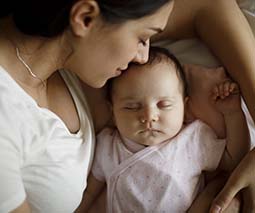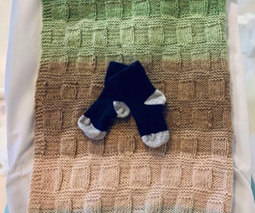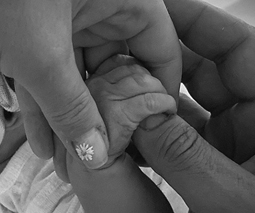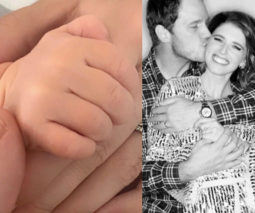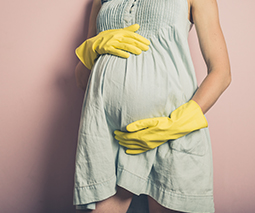Birth injuries: What do women really need to know before they give birth?
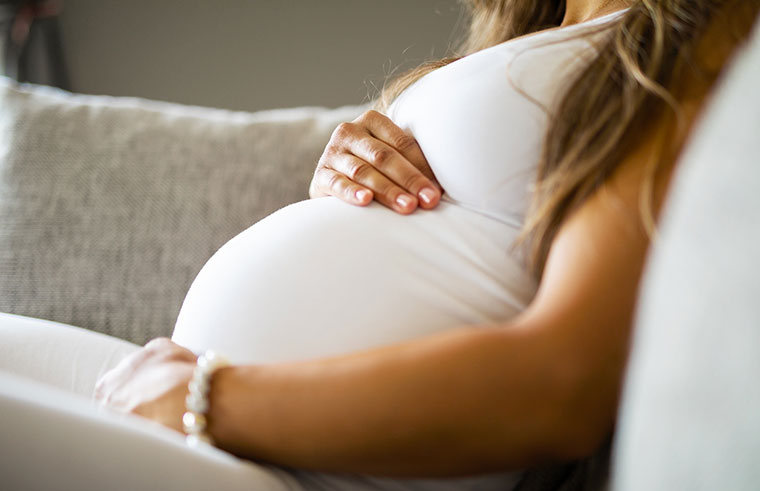
A positive pregnancy test can change your life. But for some women, their experience of giving birth can cause physical and emotional trauma.
Amy Dawes is the executive director and co-founder of the Australasian Birth Trauma Association. She has experienced birth trauma first-hand, and through her foundation, she says there needs to be more information about birth injuries that can occur.
Listen to Amy Dawes on Feed Play Love:
“When I was diagnosed with my injuries, I was 16 months postpartum, and I found out that I had something called a prolapse which is where your pelvic organs don’t sit where they’re supposed to sit,” says Amy, adding that she had never heard of a prolapse before.
But the reality, according to the Continence Foundation of Australia, is that “over half of all women who have had a child have some level of prolapse.”
“We support lots of women that have ended up with prolapse or severe pelvic floor dysfunction and yet they’re not told that this is a consequence of vaginal birth,” says Amy.
Naturally, this is something she wants to be changed.
What is birth trauma?
According to Amy, trauma can mean different things to different people, and can also present itself in many ways, making it important to treat women and their families individually.
“I think the one really important thing to remember is birth trauma is in the eye of the beholder,” Amy explains. “So what could look like a perfectly normal or positive birth experience to one person could be extremely traumatising for another.”
“So the psychological component could be being separated from the baby at birth, and as a result of that there could be problems with bonding and attachment, or extreme feelings of fearing for their babies or their own lives …”
This kind of psychological trauma can play a big part in whether a woman perceives her birth experience as a ‘positive’ or ‘negative’ one.
Physically, Amy says some women may not necessarily “identify that birth is traumatic, but what is contributed to psychological trauma is living with the day-to-day fallout of the particular injuries that they’ve sustained.”
The biggest misconception about birth trauma
Amy says trauma can present itself in many ways, such as not being able to sleep, having nightmares, or feeling scared that something terrible is going to happen. But also OCD or extreme anxiety can be triggered after a traumatic birth, and as a result, women are being misdiagnosed.
“The big misconception with birth trauma [is that] women are often misdiagnosed as having postnatal depression when, in fact, they’ve probably got perhaps psychological symptoms relating to their birth.”
Is knowledge power?
So how much should women be told about the risks associated with giving birth?
Although Amy acknowledges that there is a “fine line” when it comes to educating women about birth risks, she says medical professionals should weigh that up on an individual basis.
“It is a very fine line and we sort of open up these conversations for health professionals, who say we can’t tell women all the risks. Because a) we would just be telling them the risks and there wouldn’t be time for any other conversation and b) you know, we don’t want to scare women,” says Amy.
At the same time, if professionals look at women on an individual basis, certain risk factors can come into play and should be discussed.
“With physical trauma, there is a higher incidence of physical trauma attributed to those women having babies for the first time over a certain age. And then other factors come into play, [like] the size of the baby,” says Amy.
“The most important part of the body in the birthing process”
Additionally, Amy says everyone needs to be talking about their pelvic floor.
“We can’t just assume that the pelvic floor muscle doesn’t age like the rest of us, and yet we’re simply not told anything about the pelvic floor muscle during the pregnancy.”
“I think that it’s just essential that our health professionals acknowledge that the most important part of the body in the birthing process is the pelvic floor muscles.”
“If any mothers are listening, who are having a baby for the first time, my personal advice is to go and see a pelvic floor physio and have them assess your pelvic floor just to see where you’re at.”

